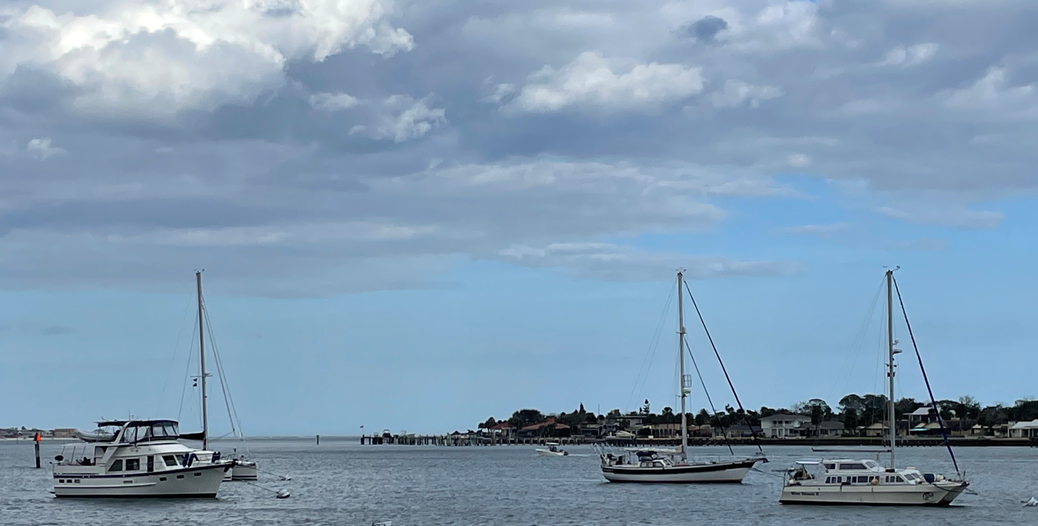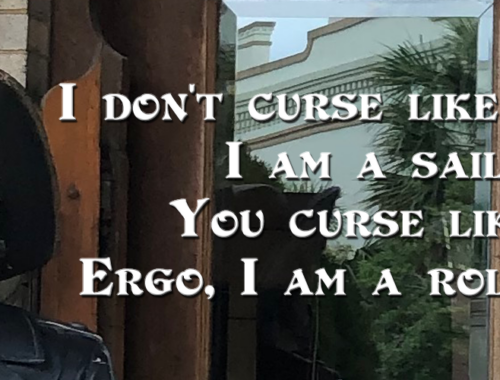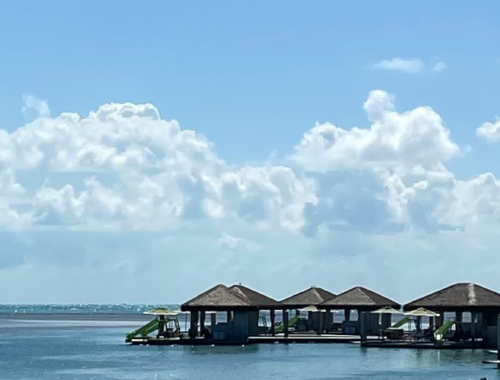
BS2 01 – Experience(s)
I have put a lot of thought into this post (more than I care to admit actually), and I’ve struggled to start writing but not because I’m at a loss for words…there is just so much to say that I don’t know where to properly begin! Do I write about the simple reality of observing nature’s beauty while traveling, maybe talk about the sights we’ve seen and the adventures we’ve had in the short time we’ve been let loose on the water, or shall I deviate from the expected norm?
I think I’ll deviate, that seems to be our modus operandi these days. You can see and or watch information on all the other topics via our other social media outlets on YouTube, Instagram, and Facebook – if you’re following us that is. (Shameless plug, see what I did there?)
I missed posting in January altogether (we are now closer to the end of February) and we are already in Saint Augustine, Florida. Well, I say we are already here, but really we should have arrived here long before we actually did, owing to my mysterious knee injury which had us laid over in Jacksonville Beach for almost a full month while it healed. As I’m writing this, we have actually been on a mooring in Saint Augustine for two full weeks already, and I have just extended our stay here a bit longer.
So far, with the exception of our time camped out on the docks, our trip has been a terrific learning experience for us. We’ve stretched ourselves to become more at ease with staying overnight at anchor (in the first thirteen nights since we left Little River we anchored during five), and we also gained the experience of using moorings (having spent another three of those first thirteen nights on moorings).
Of course anchoring is usually free but can be tricky, and docking costs vary depending on several factors including location, amenities, availability, etc. which can make some marinas quite expensive. Especially in popular tourist destinations where dockage always comes at a premium (Saint Augustine is a good example), a mooring will usually come at a good savings including marina benefits but without the extra costs of marina slip convenience, electricity hook up, and fresh water access.
Therein lies the rub. To be able to cut costs and stay at anchor or on a mooring, you need electricity, and water, and a way to get to land or to a dinghy dock. The better equipped you are to be more self-sufficient, the longer you will be able to stay ‘off-grid’. This has long been our goal which we have been striving to achieve and while we were in Jacksonville Beach William was finally able to install our new watermaker; the last major necessity for equipping Wind Dragon II to be off-grid long term.
Though installation has occurred the unit still has to be primed, a process we are in a good spot to complete here in this area of Saint Augustine where we are well aligned with incoming tidal waters via the inlet. Because of this perfect proximity we have decided to extend our stay here a bit longer in order to accomplish all tasks required to satisfactorily run our desalinator and process our own freshwater before we move farther South.
Whether at anchor or on a mooring, one must be very conscious of their own use of the aforementioned precious resources, and learning to monitor electricity and water needs is another of the major keys to success. By adjusting routines to assist with both consumption and regeneration efforts, living off-grid long term is both easily attainable and sustainable, though it does require some commitment to be successful.
We are fortunate that our years of experience spending time on the boat and practicing frugality with both water and electricity usage have conditioned us so that the adjustment to this lifestyle has been absolutely painless. Thus far we have not had any issue with supply and demand, and with luck we will have continued success with our endeavors; stay tuned to our YouTube channel for those upcoming videos!
One last important question we are often asked about in regards to long term off-grid planning is our sanitation situation (both human and animal), how do we handle that?
As far as the canines are concerned we have a large square of faux grass which we spread out on the bow that the boys are trained to utilize as their nature spot whenever we are not able to take them to land. The carpet is both easily cleanable and stow-able out of the way in a front locker when not needed, and we had zero issues training the boys to use it. Turns out when you have to go, you will go where you can!
The original Wind Dragon had an electric head, with a macerator (poop chopper), and a black water tank where all the “yuck” was stored until it could be pumped out, and it’s not always convenient to get a pump out to clear these holding tanks, so you have to monitor your tank levels on this the same as all other components. Also, as you may or may not have experienced in a boat, the yuck (gold and brown) mixes together in these black water holding tanks and creates quite an unpleasant smell.
Not that smells are not combatable, they totally are, it’s just that it takes some effort to battle the source and the source in these cases is only going to continue to devolve unless you attack it directly. Mucky tubes get clogged even with regular maintenance, and so they lead to mucky tanks. Mmm, now imagine those mucky bits on a boat, in damp and enclosed areas, usually under a warming sun. Regular maintenance – weekly “salad’ flushes (vinegar and oil) and scheduled tube flushes are a must for starters, and I’ll just leave that there and let the virtual aroma slowly sink in.
On Wind Dragon II we now use what I like to call the human litter box. These are non-electric, composting toilets. There are different versions of said litter box available out there, the most popular commercially seems to be Nature’s Head, though you can also buy other versions or build one yourself much more cheaply. Our litter-box was purchased pre-made on ETSY and although they take some acclimation, it’s the best solution out there for any off-grid sanitation situation in my personal opinion.
No Tubes, no tanks, and full separation between business means no marinating. It does require some composting material, we use both coconut husks and cedar chips (commonly known as hamster bedding) which both aide in the composting process and combat any smells, and we ignite some incense when we need to cover any pungent fresh deposits, but smells otherwise are non-existent. I was not enthusiastic about the idea of a human litter box before we tried it, but now that we have one I can honesty say I prefer this set up over any other solution. It’s easy, it’s cheap, and above all it is environmentally safe and friendly. You can’t beat that!
Until next time all, fair winds!





